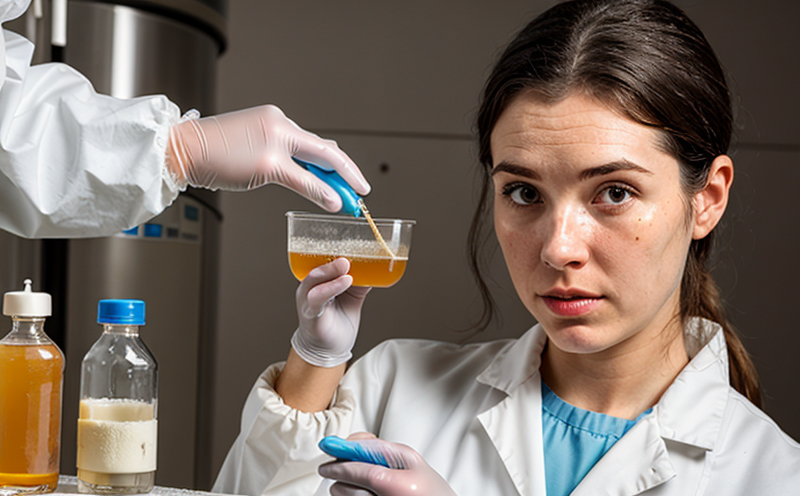WHO Guidelines Fungal Contamination in Clinical Environments
The World Health Organization (WHO) has issued guidelines on fungal contamination in clinical environments to ensure patient safety and healthcare quality. Fungi, including molds, yeasts, and other microorganisms, can pose significant risks if not adequately controlled within medical settings.
Fungal contamination is a critical issue that affects the cleanliness of hospital environments and the quality of patient care. The WHO guidelines provide a framework for identifying, managing, and preventing fungal contamination in healthcare facilities. These recommendations are based on international standards such as ISO 14644-1:2015, which sets out requirements for cleanrooms and associated controlled environment spaces.
The primary goal of the WHO guidelines is to minimize the risk of fungal-related infections among vulnerable patients, such as those with compromised immune systems. By adhering to these standards, healthcare institutions can ensure that their environments are free from harmful fungi, thereby enhancing patient safety and reducing the likelihood of nosocomial infections.
One key aspect of the WHO guidelines is the requirement for regular monitoring and testing of fungal contamination levels in clinical environments. This involves using advanced microbiological techniques to identify specific types of fungi present in the air and surfaces within healthcare facilities. The use of high-quality laboratories, like Eurolab, ensures that these tests are conducted accurately and consistently with international standards.
The WHO guidelines also emphasize the importance of proper specimen preparation and analysis methods when conducting fungal identification tests. This includes the collection of appropriate samples from various locations within a hospital or clinic setting, ensuring that the specimens are representative of the environment being tested. Once collected, these samples undergo rigorous laboratory procedures to identify the presence and types of fungi present.
Another critical component of the WHO guidelines is the implementation of effective control measures designed to prevent fungal contamination in clinical environments. These measures may include enhanced cleaning protocols, improved ventilation systems, and the use of antifungal agents where necessary. By adopting these best practices, healthcare providers can significantly reduce the risk of fungal-related infections among patients.
Compliance with WHO guidelines is essential for maintaining high standards of patient care in clinical environments. Non-compliance could lead to increased incidences of nosocomial infections and compromise overall health outcomes for affected individuals. Therefore, it is crucial that healthcare facilities invest in reliable testing services provided by reputable laboratories such as Eurolab.
In summary, the WHO guidelines provide a comprehensive approach to managing fungal contamination in clinical environments. By adhering to these recommendations, healthcare institutions can create safer and more hygienic spaces for both patients and staff members. Proper implementation of these guidelines helps protect vulnerable populations while maintaining optimal levels of care within medical settings.
Benefits
Enhanced patient safety through reduced risk of nosocomial infections.
Improved quality of care within clinical environments.
Compliance with international standards and regulatory requirements.
Informed decision-making supported by accurate and consistent testing results.
Effective control measures leading to safer hospital settings.
Potential cost savings from preventing costly outbreaks and infections.
Industry Applications
Fungal contamination in clinical environments is a growing concern due to the increasing number of immunocompromised patients. Healthcare facilities, particularly hospitals and clinics, need reliable testing services to ensure their environments meet stringent hygiene standards. By adhering to WHO guidelines, these institutions can maintain high levels of cleanliness and reduce the risk of fungal-related infections.
Eurolab's expertise in mold, yeast, and fungal identification testing plays a vital role in supporting healthcare facilities in meeting these challenges. Our services provide critical insights into potential contamination issues, enabling proactive interventions before they escalate into larger problems. This not only enhances patient safety but also supports the overall reputation of the facility as a leader in quality care.
Our comprehensive approach to fungal identification testing includes advanced microbiological techniques that ensure accurate and reliable results. These tests are designed to identify specific types of fungi present in the air and surfaces within healthcare facilities, providing valuable information for maintaining optimal hygiene standards.
Eurolab Advantages
At Eurolab, we pride ourselves on offering unparalleled expertise in mold, yeast, and fungal identification testing. Our team of highly skilled professionals combines years of experience with cutting-edge technology to deliver precise and reliable results every time. Whether you're a quality manager, compliance officer, or R&D engineer, our services can help you ensure that your clinical environments meet the highest hygiene standards.
Our commitment to excellence is reflected in our adherence to international standards such as ISO 14644-1:2015 and WHO guidelines. By choosing Eurolab for your fungal contamination testing needs, you gain access to a network of trusted professionals who understand the unique demands of maintaining safe and hygienic clinical environments.
In addition to our robust technical capabilities, we also offer flexible service options tailored to meet the specific requirements of each client. From routine monitoring programs to one-off assessments, Eurolab is committed to providing solutions that align with your business goals and objectives.
Trust Eurolab to help you navigate the complexities of fungal contamination testing in clinical environments. With our proven track record and unwavering dedication to quality, we are confident that we can assist you in achieving your desired outcomes.





